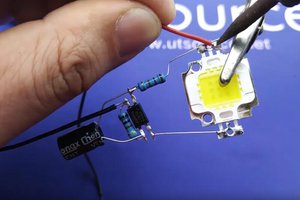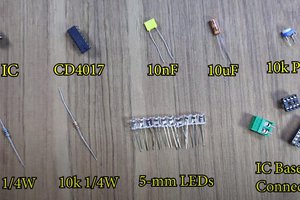Circuit DiagramThis is the basic circuit diagram of the obstacle detection circuit. In this circuit, one IR LED is always on. The other IR LED is connected to the base pin of the BC547, since this IR LED is acting as the detector.
Steps to follow:
Step 1: Arrange the components.
Step 2: Solder one IR LED to the emitter pin of the BC547 transistor.
When the detector IR LED is detected, the reflected IR light from the object will trigger a small current that will flow through the detector IR LED. This will trigger the BC547 transistor and it will also cause the BC557 to trigger, hence the LED will turn on.
Conclusion
You can use this circuit to build various projects such as automatic lamps which turns on when a person comes near to the light.
Enjoy! Contact us for any inquiries!


 Electroniclovers123
Electroniclovers123
 UTSOURCE
UTSOURCE
 Hulk
Hulk
 Alexandra Covor
Alexandra Covor
Check the schematics. I think the top-left IR LED should be put backwards, as it is shown in the pictures at step #3 and #4